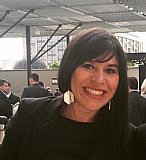Introduction
Spanish and Catalan are two distinct Romance languages that have evolved separately over centuries. Both languages have rich linguistic histories and are spoken in different regions with unique cultural identities. In this post, we will explore the differences between Spanish and Catalan, the regions where they are spoken, and the historical factors that contributed to their divergence.
Geographical Distribution:
Spanish, also known as Castilian, is one of the world's major languages and is primarily spoken in Spain and many Latin American countries, including Mexico, Colombia, Argentina, and others. It also serves as an official language in Equatorial Guinea and is widely spoken in various communities around the world due to migration.
Catalan, on the other hand, is spoken in specific regions of Spain, namely Catalonia, Valencia, the Balearic Islands, and parts of the eastern region of Aragon. Additionally, it is the official language of the country of Andorra.
Linguistic Characteristics:
Despite being both Romance languages and sharing some similarities, Spanish and Catalan have distinct linguistic characteristics. Spanish is known for its straightforward pronunciation and relatively simplified grammar. It has a phonetic orthography, which means that words are generally pronounced as they are written.
Catalan, on the other hand, has a more complex phonology with different vowel sounds and distinct stress patterns. It also has several diphthongs and unique consonant clusters that set it apart from Spanish. Additionally, Catalan has retained more Latin features, making it closer to its Latin roots than Spanish.
Spanish
- Phonology: Spanish has a relatively straightforward phonological system, with five vowel sounds and clear consonant pronunciation. Vowels are generally pronounced as short, and there is no distinction between voiced and unvoiced fricatives.
- Grammar: Spanish grammar is known for its simplicity compared to other Romance languages. It has a more straightforward conjugation system for verbs, with fewer irregularities compared to Catalan.
- Word Stress: In Spanish, word stress is relatively predictable, often falling on the penultimate syllable (second-to-last syllable) for most words. This regularity in stress patterns simplifies pronunciation.
- Vocabulary: Spanish has a significant influence from Arabic, particularly in words related to science, art, and everyday life. It has also borrowed words from other languages like English and Nahuatl (an indigenous Mexican language) due to historical contacts.
Catalan:
- Phonology: Catalan has a more complex phonological system compared to Spanish, with eight vowel sounds. It also has more distinctive consonant sounds, including voiced and voiceless fricatives, which differentiate it from Spanish.
- Grammar: Catalan has a more extensive and intricate verbal conjugation system compared to Spanish. It also retains more Latin features, making it closer to its ancient roots. Catalan also preserves the neuter gender for nouns, which Spanish has lost.
- Word Stress: Catalan has less predictable word stress than Spanish. Stress can fall on any syllable, making it more challenging for learners to predict the pronunciation of new words.
- Vocabulary: Catalan vocabulary often reflects its historical connections to other Romance languages, such as French and Italian, as well as its own unique linguistic development. It also retains some archaic and medieval vocabulary.
Historical Factors for Divergence:
The historical divergence between Spanish and Catalan can be traced back to the medieval period. Both languages developed from Latin, but their evolution was shaped by different historical contexts.
The emergence of Catalan as a separate Romance language can be attributed to the influence of various languages spoken in the region. During the Middle Ages, the area that is now Catalonia was a cultural melting pot, with influences from Latin, Visigothic, Arabic, and Old French. This linguistic diversity contributed to the development of a distinct Romance language, known today as Catalan.
On the other hand, Spanish (Castilian) emerged as a dominant language in the northern region of Castile in what is now modern-day Spain. The Kingdom of Castile expanded its influence through colonization and conquest, leading to the spread of Castilian Spanish throughout the Iberian Peninsula and later across the Americas.
Cultural Identity and Regional Autonomy:
The differences between Spanish and Catalan languages also reflect the distinct cultural identities and regional autonomy of the areas where they are spoken. Catalonia, in particular, has a strong sense of cultural identity and has historically sought greater political and linguistic autonomy within Spain. The use of the Catalan language has been an essential element in asserting and preserving the region's distinct cultural heritage.
Modern Linguistic Preservation:
In recent times, efforts have been made to preserve and promote the Catalan language, particularly in Catalonia. Catalan is now recognized as an official language in Catalonia, alongside Spanish. Bilingual education and language policies in regions where Catalan is spoken aim to ensure its continued use and vitality.
Conclusion
Spanish and Catalan are two distinct and vibrant Romance languages with unique linguistic characteristics and historical origins. Spanish is widely spoken around the world, while Catalan is predominantly spoken in specific regions of Spain. The divergence between the two languages can be traced back to the medieval period, influenced by different historical contexts and cultural identities. Despite their differences, both languages are important expressions of the rich linguistic and cultural diversity found in the Iberian Peninsula.















